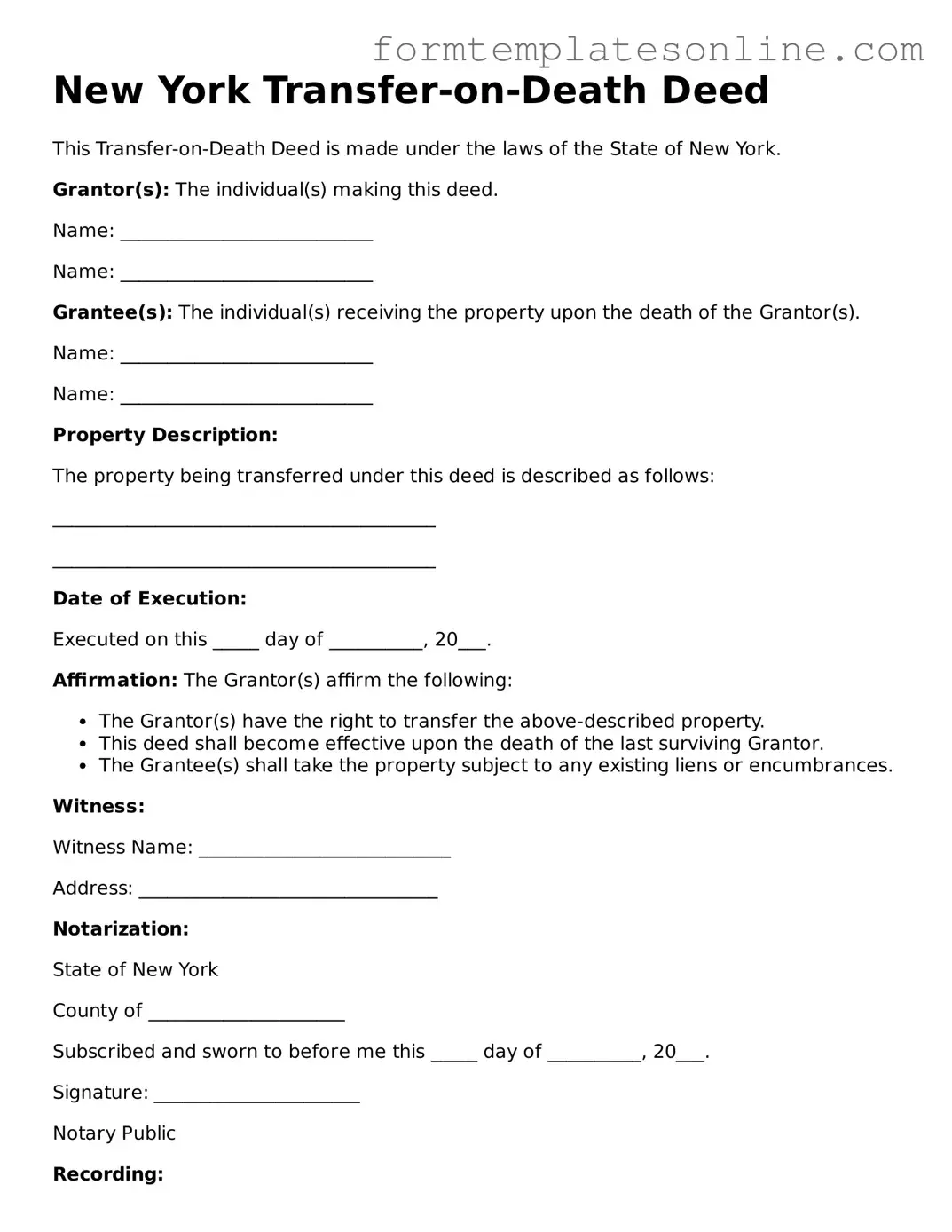What is a Transfer-on-Death Deed in New York?
A Transfer-on-Death Deed (TOD Deed) allows an individual to transfer real estate to a beneficiary upon their death, without going through probate. This form is beneficial for individuals looking to simplify the transfer of their property and avoid lengthy legal processes after their passing.
Who can use a Transfer-on-Death Deed?
Any individual who owns real property in New York can utilize a Transfer-on-Death Deed. This includes homeowners, property investors, and anyone else with title to real estate. However, the deed must be executed correctly to be valid.
How do I create a Transfer-on-Death Deed?
To create a TOD Deed, you must fill out the appropriate form, which includes details about the property and the beneficiary. After completing the form, it must be signed in the presence of a notary public. Finally, the deed must be recorded with the county clerk where the property is located to ensure its effectiveness.
Can I change or revoke a Transfer-on-Death Deed?
Yes, you can change or revoke a Transfer-on-Death Deed at any time before your death. To do this, you must create a new deed or a revocation form and follow the same recording process. It is essential to ensure that the new or revoked deed is properly executed and recorded to avoid any confusion regarding your intentions.
What happens if the beneficiary predeceases me?
If the designated beneficiary dies before you, the Transfer-on-Death Deed will not transfer the property to that individual. Instead, the property will become part of your estate and will be distributed according to your will or New York state intestacy laws if you do not have a will.
Are there any tax implications with a Transfer-on-Death Deed?
Generally, transferring property through a TOD Deed does not trigger immediate tax consequences. However, the beneficiary may be responsible for property taxes after the transfer occurs. It is advisable to consult a tax professional to understand any potential implications fully.
Is a Transfer-on-Death Deed the same as a will?
No, a Transfer-on-Death Deed is not the same as a will. While both documents deal with the distribution of property after death, a TOD Deed specifically transfers real estate outside of probate. A will, on the other hand, outlines how all assets, including real estate, should be distributed and must go through the probate process.
Can I use a Transfer-on-Death Deed for all types of property?
A Transfer-on-Death Deed is specifically designed for real property, such as land and buildings. It cannot be used for personal property, bank accounts, or other types of assets. For those assets, different estate planning tools may be necessary.
Do I need an attorney to create a Transfer-on-Death Deed?
While it is not legally required to have an attorney assist you in creating a Transfer-on-Death Deed, it is often recommended. An attorney can help ensure that the deed is properly executed and recorded, minimizing the risk of future disputes or complications.
